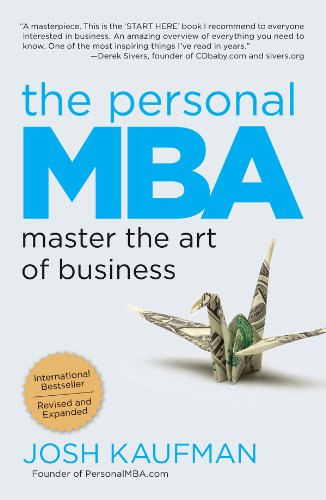
Avoid the Number One Mistake Most New Businesses Make
Remember back in 2001 when Segway (those funny little, two wheeled, self-balancing electric vehicles) came on the scene in a flurry of media hype that touted it to be the future of personal transport?
With some surprisingly deep funding and an overeager publicity blitz, for a brief moment in time, it seemed like maybe, just maybe, we were about to be ushered collectively into a brave new world only one step removed from the promised hover-boards of Back to the Future.
But here we are over fifteen years later and I challenge you to find a Segway being used by anybody besides security guards and tourists.
So what happened? Where did Segway go wrong?
Good question. The resulting answer is one every business needs take to heart when it comes time to release new products and/or services.
So let’s get to it and learn from Segway’s epic failure.
Unproven Market
“Your scientists were so preoccupied with whether or not they could, they didn’t stop to think if they should.”
Ian Malcolm (Jurassic Park)
Too many companies fail because they dive into unproven markets with unproven products.
Simply having a nifty idea, and the ability to execute on it, is not enough to succeed. There must, must, must be a market of people willing to pay for your product or service.
If there isn’t, it will fail.
This is where the Segway went astray.
Ask yourself, Who was the Segway designed for?
It’s a neat concept, but from a practical application standpoint, who’s the target audience?
Is it businessmen and women living in downtown areas?
If so, there are logistics issues we need to hammer out. Namely, do these hybrid vehicles utilize the sidewalk or the street? Where do we charge them? Where do you park them?
A cities infrastructure, unfortunately, is not well suited for these strange vehicles.
So, maybe they’re designed for college students getting around campus? A low-cost alternative to car?
Well, again, the problems are two-fold.
First, the Segway is incredibly expensive for what it is. You’d be better served buying a fleet of bicycles or an old Honda.
Second, the Segway is one of the dorkiest looking vehicles around. This is due in large part to the fact that Segway kept their invention tightly under wraps leading up to its release. They didn’t garner customer feedback in the design phase, and it shows in the end product.
No matter how you slice it, the Segway was doomed to fail from the beginning simply because there was no clearly defined target audience willing to pay money for the thing.
Learn from Segway’s mistake and always test to make sure there are, in fact, enough people in the world willing to part ways with their money for the thing you’re selling.
Do this the same way FitBit did it…
Prototypical Success
When FitBit came on the scene in 2007 it was nowhere near consumer ready.
It was little more than an idea, but at the end of the day, that’s all you really need to prove a concept.
With nothing but a simple web-page filled with some vague information about what the FitBit could do, a 3D mockup, and a pre-sale for people interested in getting the product at some undetermined time in the future, and FitBit was off to the races.
In a world that has known Kickstarter and Indigogo for a number of years now, this might not seem such a strange concept, but many would-be entrepreneurs and start-ups are still failing to vet the marketability of their products before, you know, actually going to market.
This is a fundamental mistake.
If you’re a small business owner, you probably don’t have oodles of capital just lying around. You must guard it with the protectiveness of a dragon. You can’t afford to waste a single penny on an unproven product.
Luckily, thanks to the world’s current digital ecosystem, you don’t have to.
That is if you remember to fire bullets before cannonballs.
Bullets Before Cannonballs
Imagine your business is a ship.
Off on the horizon another ship fast approaches. Upon their sail you see the Jolly Roger’s butt-puckering symbol. (For this analogy, that pirate ship is the market. It’s an opportunity, albeit one that will sink your ship if given half-a-chance.)
You prepare for battle and load up your cannons, but it’s important to note that you only have a limited amount of gunpowder (ie: capital).
As that pirate vessel (the market) nears, you take aim with your mighty cannon and let loose a volley.
Unfortunately, your missiles sail harmlessly past.
Drats, you miscalibrated.
You go to load up another salvo only to find you foolishly wasted your entire store of gunpowder.
Ruh roh… you’re dead in the water.
But what if, at the start of the conflict, you didn’t just start firing cannonballs all willy-nilly?
What if you calibrated your trajectory by first firing a couple of bullets?
You might miss the first few shots, but by the third or fourth, you might actually hit.
Then, with the confidence afforded by a proven method, you take aim with your single cannon and make certain that bad-boy finds its mark.
This analogy comes from Jim Collins’ excellent Great By Choice and it’s hyper-relevant to any would-be entrepreneurs wanting to break into a market today.
Never fire cannonballs without first proving the concept with a few well-placed bullets.
Testing the Market
This really isn’t that complicated. Steal a page from FitBit or Kickstarter’s book.
Create the outline of a product or service and then market it to your audience. Make it available for pre-order whereby you don’t actually charge anybody’s credit card until the product goes to market. If the project falls through because of lack of support or logistics issues, then everybody gets their money back and you’ve learned a valuable lesson.
In this way you can vet products that you haven’t even created yet.
This can be a double-edged blade, however, because if the product really takes off and there’s a huge market for it, then you’ve got to saddle-up and find a way to make that pony run (pretty this is a completely new and unique and totally not weird analogy that I just thought up right now. Forgive me if it doesn’t make any sense.)
The Curse of Mediocre Success
What if your product gains some initial buy-in, but not a ton?
Now you’re in a strange limbo between moving forward and full-on retreat. This is a hard place to be.
So what do you do if there’s interest in your product, but not quite enough?
Well, this is where you field feedback from would-be customers and start iterating, my friend.
Josh Kaufman in The Personal M.B.A. lists 5 reasons people don’t buy a thing:
- “It costs too much.” Perceived value is too low.
- “It won’t work.” Too good to be true.
- “It won’t work for me.” My situation is unique.
- “I can wait.” The probelm the product solves is not critical.
- “It’s too difficult.” The product or service is too complicated.
Any one of these 5 reasons (or a combination thereof) could stop a potential customer from buying your product or service. The solution, therefore, is either one of educating people better about the value of your product, or of addressing these complaints in the design and/or implementation of your product/service.
The important part here is to avoid making huge, sweeping changes.
This is where many companies go astray.
They have a bucketful of great ideas and they throw them all at the wall, and, in an ironic twist of fate, they end up changing things that were a) never a problem, or b) things people loved about the original problem.
Therefore it’s vital you always iterate in small (preferably reversible) chunks.
Tweak and Test is the name of the game.
Get good at this game and you’ll soon become an expert marksmen capable of hitting their target with incredible reliability.
Or, to drop the analogy, you’ll be a successful business consistently putting out highly sought after products and services.

